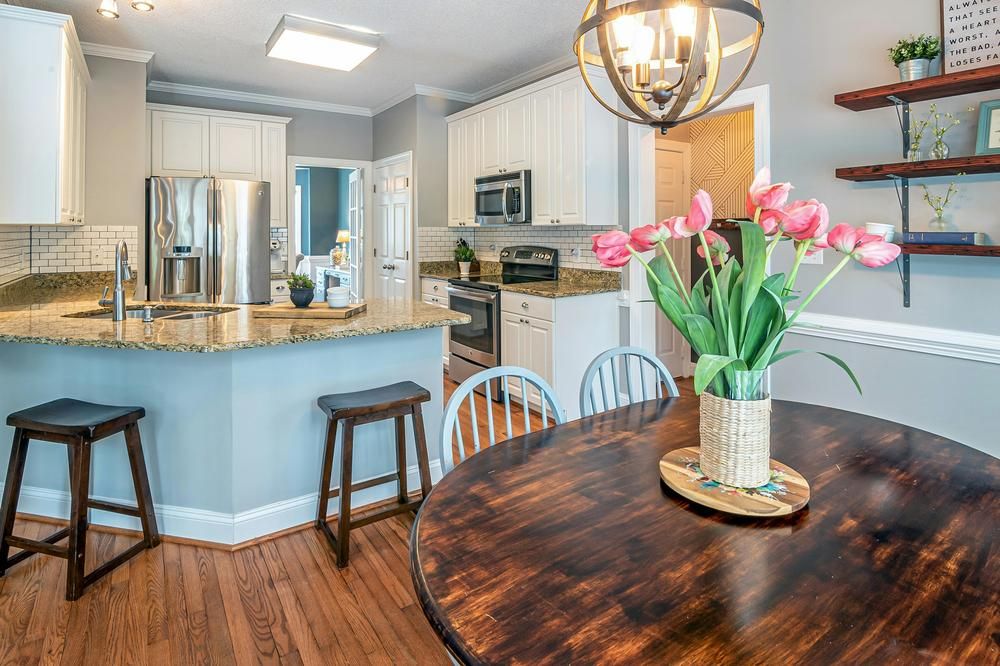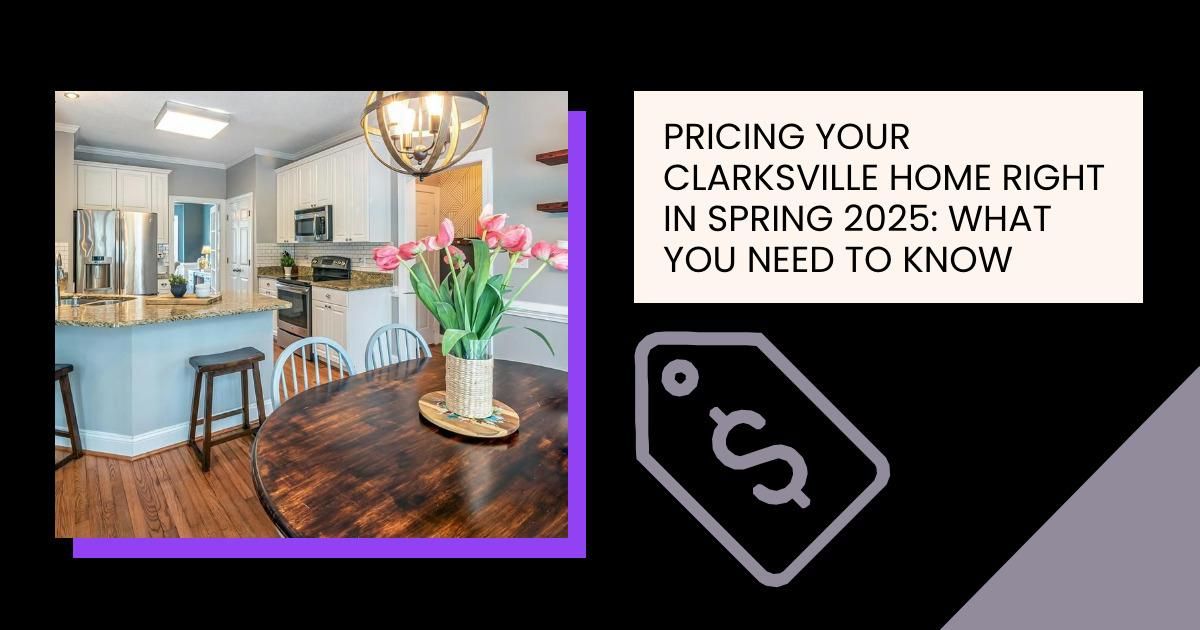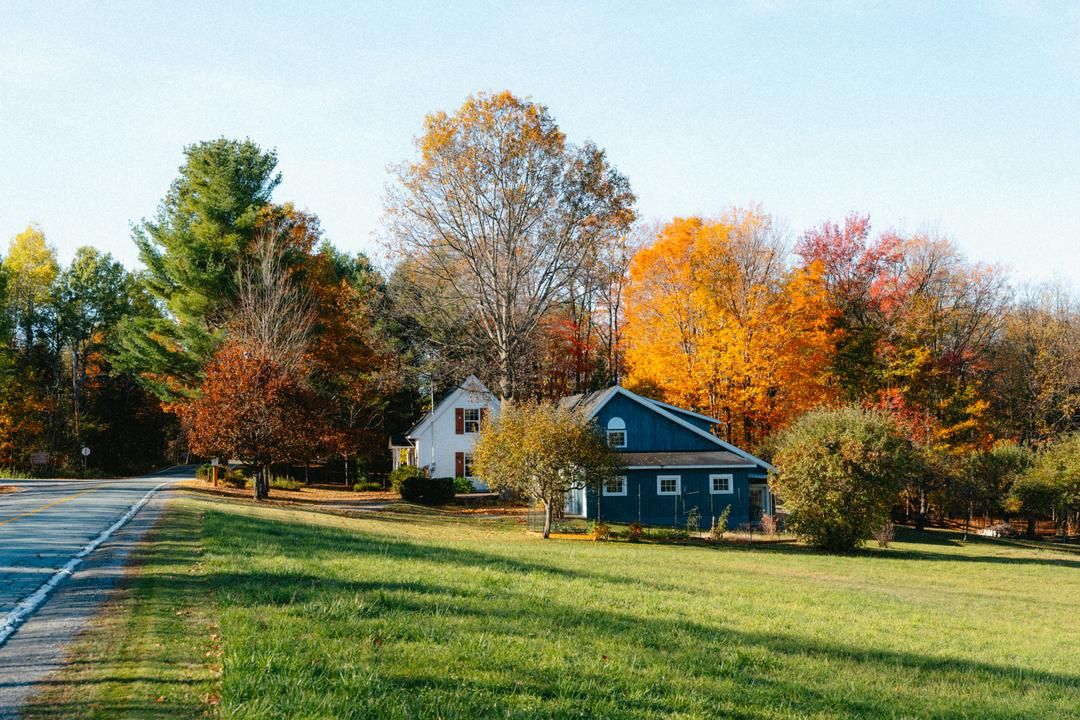
Spring is one of the busiest seasons for home sales, and if you’re thinking about selling, you’re not alone. But with all the buzz, there’s one big question most sellers have: How do I price my home right?
The truth is, the right price can make or break your sale. Set it too high, and you might scare off potential buyers. Set it too low, and you could leave money on the table. So, let’s break down how to find that sweet spot—where your home sells quickly and for a price that makes sense.
Understand the Current Market in Clarksville
First things first: What’s happening in the housing market this spring in Clarksville? Interest rates are still a big factor. While they’ve come down a bit from last year’s highs, they’re not exactly low. Buyers are cautious, but many are eager to lock in a purchase before rates shift again. In fact, according to recent data, the average mortgage rate in Tennessee is hovering around 6.5%, which is still keeping some buyers on the sidelines while others are jumping in before potential increases.
This spring, there's another major economic factor on everyone's minds: tariffs. For homeowners, homebuyers, renters exploring ownership, and the real estate professionals who support them, understanding the connection between tariffs, inflation, and mortgage rates is more relevant than ever. This may impact buyer sentiment and spending power, so staying informed is crucial.
The Role of Seasonality
Spring isn’t just a popular time for buyers—it’s also when sellers flood the market. Homes tend to show better with blooming flowers and mild weather, especially around places like the Clarksville Greenway and Liberty Park, which attract a lot of foot traffic. This means your competition will be higher, so pricing your home correctly from the start will give you a solid advantage.
Keep in mind that buyers are often more emotional in the spring, envisioning their future summer in a new home. Capitalize on this by making sure your home is in its best possible condition for showings. A fresh coat of paint or some well-placed landscaping can make a big difference in how your home is perceived.
Get a Comparative Market Analysis (CMA)
A Comparative Market Analysis, or CMA, is one of the best tools for determining your home’s value. We’ll look at recent sales of similar homes in your neighborhood to see how your property stacks up while factoring in details like square footage, condition, age, and upgrades. For instance, homes in the St. Bethlehem area have sold for an average of $250,000 to $300,000 recently, depending on their condition and features.
Remember: The homes that sold six months ago may not reflect today’s market. Spring brings fresh buyers and sometimes shifts in demand. You’ll want to make sure your agent is pulling real-time data. If you’re looking for an accurate CMA with the latest market stats, just reach out. I’m happy to help with that.
Think Like a Buyer
This one’s tough, but try to see your home through a buyer’s eyes. You may love the custom kitchen backsplash or that cozy reading nook you built, but will buyers value those things as much as you do? Remember, buyers are often comparing multiple properties, and they’re looking for value. If a similar house down the street has a newly remodeled bathroom and yours doesn’t, pricing yours a little lower might be the smarter move.
Don’t Overprice “Just to See”
It’s tempting to aim high and hope buyers negotiate down. But the reality? Overpriced homes tend to sit. And the longer your home lingers, the more buyers wonder what’s going on. In the Clarksville area, homes priced well above market value can see significant price reductions after just a few weeks on the market. If you’re not getting interest within the first couple of weeks, it may be time to adjust your price. We can monitor feedback from showings and watch for patterns—if buyers love the layout but balk at the price, that’s a clear signal.
Factor in Your Goals
Are you hoping for a fast sale so you can move into your next home? Or are you willing to wait it out for the highest possible offer? Your pricing strategy should reflect those priorities. If speed is your top concern, pricing slightly below market value can drive competition and potentially spark a bidding war. On the flip side, if you’re not in a rush, you might have room to price higher and negotiate.
Consider Recent Upgrades and Repairs
Have you recently renovated your kitchen, added a deck, or updated the roof? These investments can boost your home’s value, but not always at a 1:1 ratio. Some upgrades, like bathrooms and kitchens, tend to offer higher returns than others. Be sure your agent factors these into your pricing strategy. For example, a kitchen remodel can recoup around 80% of its costs in the Clarksville market.
On the other hand, if your home has outdated features or deferred maintenance, buyers will likely expect a lower price. Making minor repairs and touch-ups before listing can prevent lowball offers. A little effort can go a long way in impressing potential buyers.
Monitor Neighborhood Trends
Pay attention to what’s happening in your neighborhood. Are homes selling quickly? Are there multiple offers? Or are properties lingering for weeks with price reductions? In areas like Kenwood, homes have been selling in just a week or two, while some listings in other neighborhoods have seen price drops after extended periods on the market.
We’ll help you analyze these trends and decide whether it’s best to price on the higher or lower end of your range. Understanding local dynamics can make all the difference in your pricing strategy.
Be Prepared to Negotiate
Even if your home is priced correctly, most buyers will still try to negotiate. Be ready to respond to offers with a counteroffer that keeps the conversation going without sacrificing your bottom line. Stay calm, be flexible, and work with your agent to find common ground. Remember, a well-negotiated sale benefits both sides, and being open to negotiation can lead to a successful outcome.
Stay Flexible
Even with careful planning, the market can shift. Maybe a competing home in your neighborhood drops its price, or buyer demand suddenly surges. Be open to adjusting your price if needed. Your agent is your best resource for keeping an eye on trends and advising you on any tweaks that could help your home sell faster.
Final Thoughts
Pricing your home isn’t an exact science, but it’s also not a guessing game. By understanding market conditions, thinking like a buyer, and working with a knowledgeable agent, you can confidently set a price that works for you. If you’re ready to take the next step, get in touch to get a personalized pricing strategy tailored to your home and your goals.
Thinking about selling your home?
Get in touch. We'll guide you through every step of the process to ensure a smooth transaction that meets your goals.
.png)





